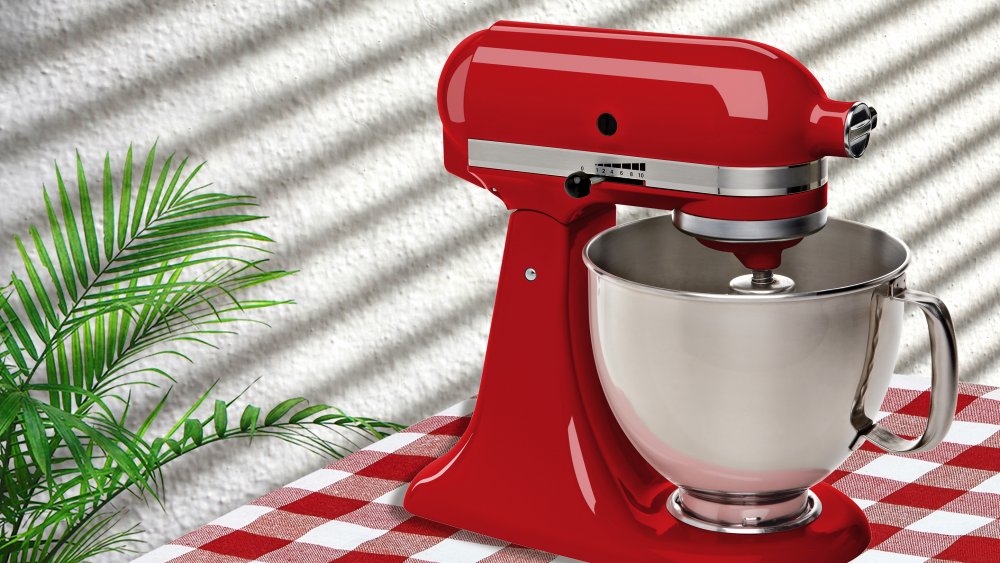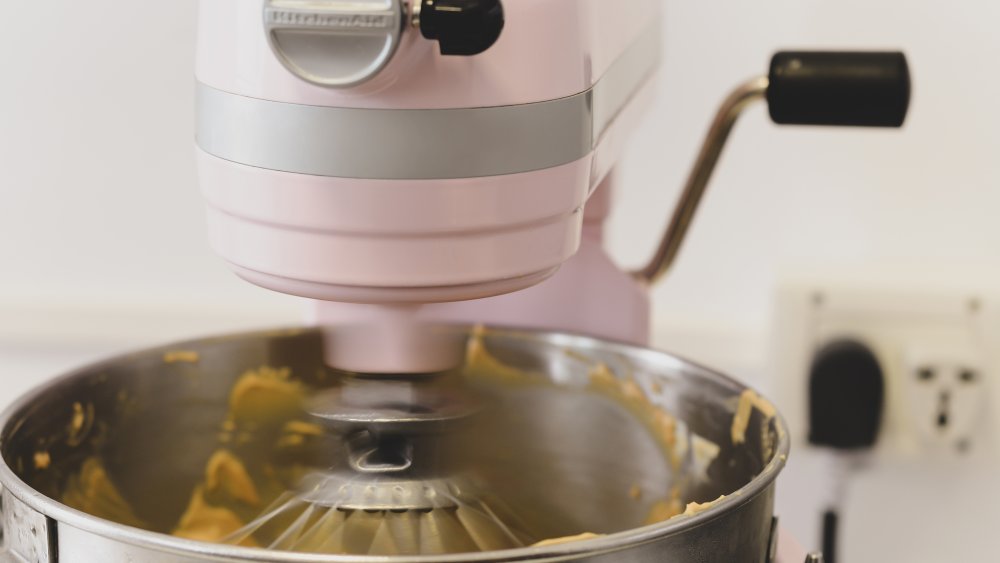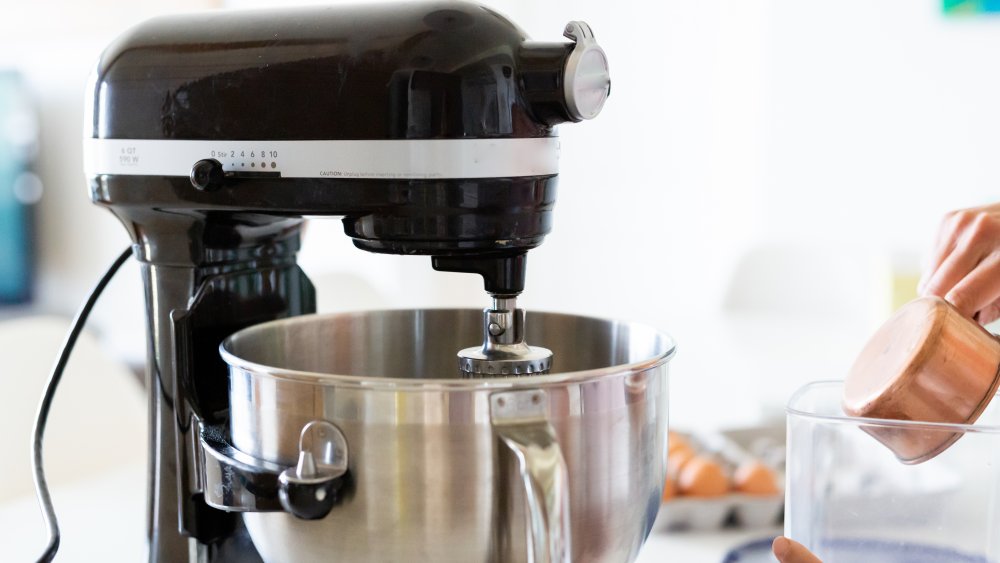The Reason KitchenAid Mixers Are So Expensive
If the thought of baking makes your heart beat with excitement, chances are your first encounter with a KitchenAid also meant love at first sight. The stand mixer has always risen head and shoulders above all others, so much so that during its early days, an executive's wife at KitchenAid manufacturer Hobart reportedly said, "I don't care what you call it. All I know is it's the best kitchen aid I've ever had," when she used the machine (via Delish).
But your burning desire to make a KitchenAid your own may be moderated by its price tag, which can run upwards of $500 depending on the model. Just why it is that KitchenAid stand mixers are so expensive? And also, are they even worth the money?
The first KitchenAid was created for industrial use
Eater says the stand mixer was invented by Herbert Johnson, an engineer at the Hobart Manufacturing Company, after he watched a baker wrestle with his dough. Johnson's first mixer was an 80-quart industrial monster known as the Hobart Model-H, which was introduced in 1914. The company opted to manufacture home models a few years later, and as the story goes, those first home models were then given to Hobart executives' wives to test. By 1927, the stand mixer was a hit with more affluent households, and sales hit 20,000 units in three years.
If you think KitchenAid mixers are expensive today, the first home model, which was introduced in 1919, was priced at $189 — or about $2,777 if you adjust for inflation (via Eater).
The KitchenAid is a true kitchen aid
The executive's wife was not exaggerating when she called the Hobart stand mixer a kitchen aid. The Chicago Tribune compares having a KitchenAid to having another set of hands capable of beating more than a dozen eggs, kneading dough, or, with the right attachments, to make ice creams, pastas, or even grind meat, all without compromising on reliability or breaking a sweat.
Not only is it versatile, but it's also fashioned with quality craftsmanship and parts that are meant to last. The KitchenAid is so durable, in fact, that the Chicago Tribune says it could well outlive you; Eater invites a prospective buyer to think of the mixers (which Delish says continue to be assembled in Greenville, Ohio) as a 10- to 15-year investment, but they often last far longer than that. Unlike today's jazzed up gadgets, the mixer is meant to serve its owner for as long as it is needed, and every model released since the Kitchen Aid Model K was released in 1937 works with every attachment made since then.
So while the KitchenAid might cost a small fortune, those that own a model think it's worth every penny.


